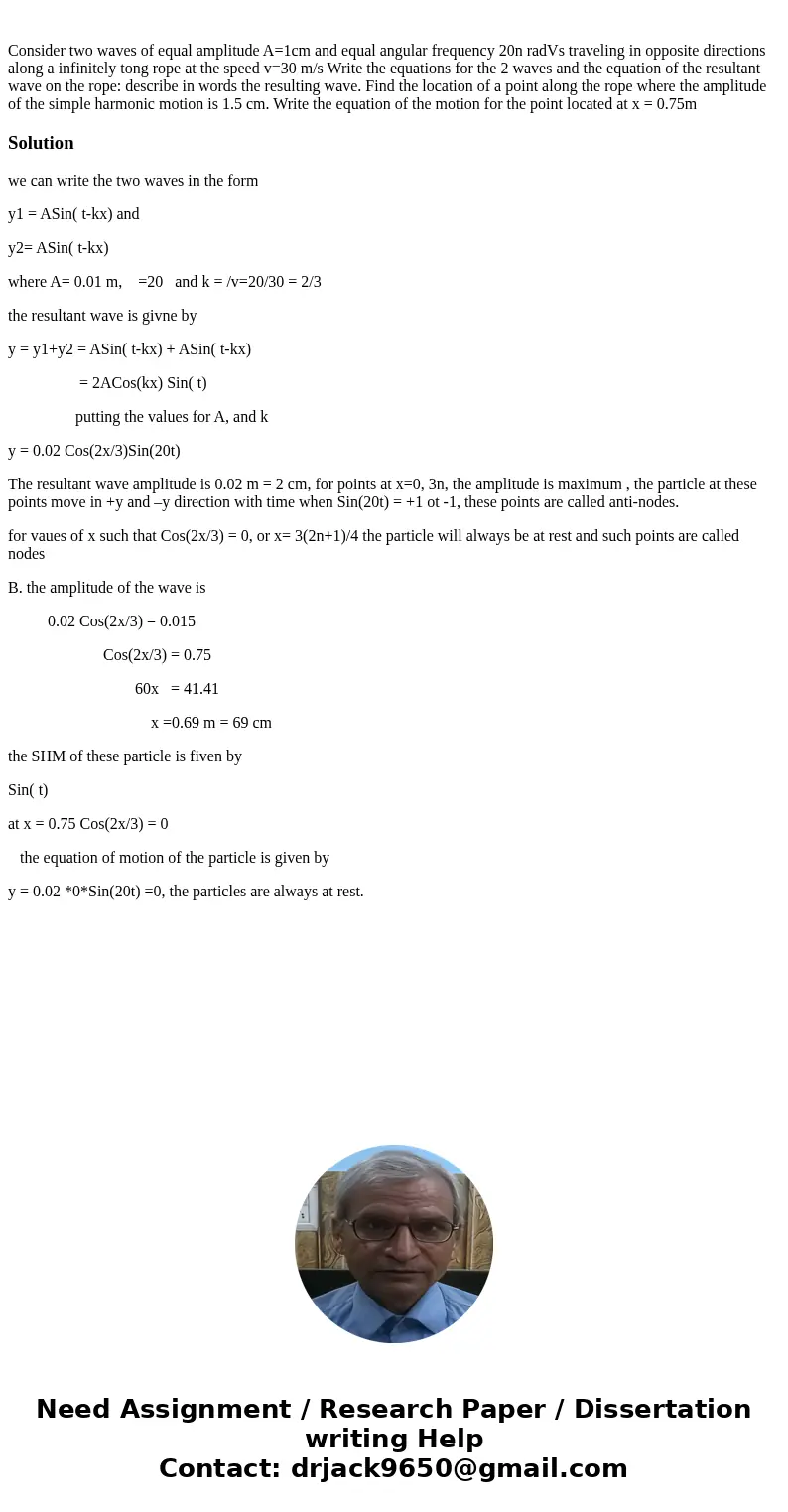Consider two waves of equal amplitude A1cm and equal angular
Solution
we can write the two waves in the form
y1 = ASin( t-kx) and
y2= ASin( t-kx)
where A= 0.01 m, =20 and k = /v=20/30 = 2/3
the resultant wave is givne by
y = y1+y2 = ASin( t-kx) + ASin( t-kx)
= 2ACos(kx) Sin( t)
putting the values for A, and k
y = 0.02 Cos(2x/3)Sin(20t)
The resultant wave amplitude is 0.02 m = 2 cm, for points at x=0, 3n, the amplitude is maximum , the particle at these points move in +y and –y direction with time when Sin(20t) = +1 ot -1, these points are called anti-nodes.
for vaues of x such that Cos(2x/3) = 0, or x= 3(2n+1)/4 the particle will always be at rest and such points are called nodes
B. the amplitude of the wave is
0.02 Cos(2x/3) = 0.015
Cos(2x/3) = 0.75
60x = 41.41
x =0.69 m = 69 cm
the SHM of these particle is fiven by
Sin( t)
at x = 0.75 Cos(2x/3) = 0
the equation of motion of the particle is given by
y = 0.02 *0*Sin(20t) =0, the particles are always at rest.

 Homework Sourse
Homework Sourse